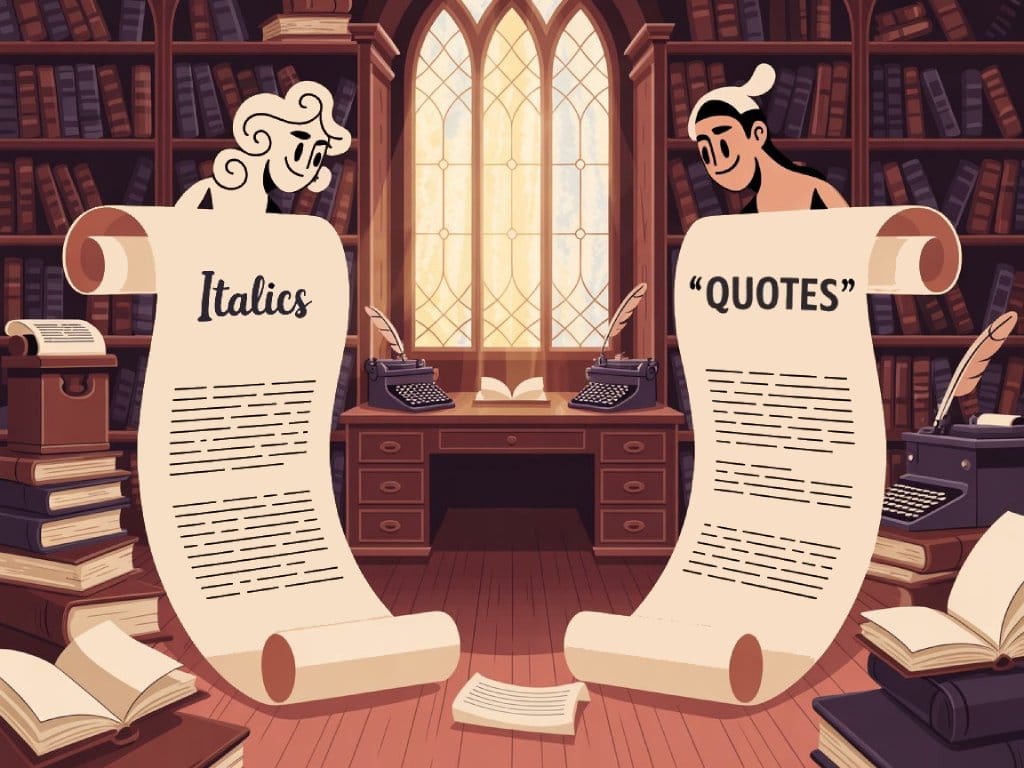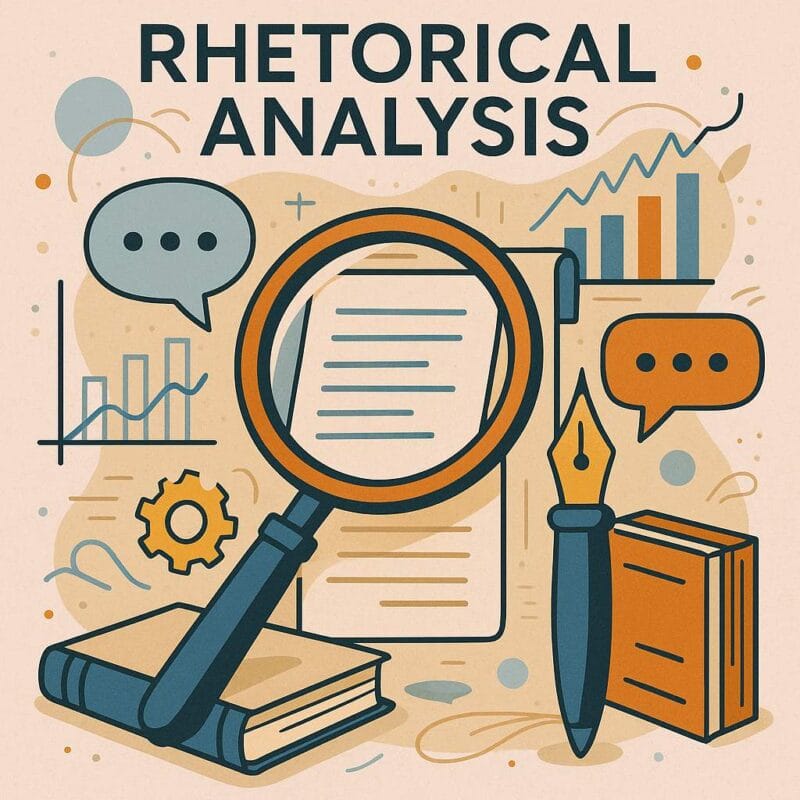The matter of italics versus quotation marks may look like a surface detail, yet it cuts to the very grammar of how writing organizes thought. Writers, editors, and students frequently ask whether quoted passages should be italicized, when to use quotation marks for titles, or how to mark emphasis without breaking convention. The choice is not simply for decorative purposes but should follow conventions that govern how literature, essays, and even everyday writing are navigated and interpreted.
Italics vs. Quotation Marks: The General Rule
The broad distinction is clear: italics signal longer, self-contained works, while quotation marks enclose shorter or subsidiary pieces. A novel like Herman Melville’s Moby Dick (1851) or a newspaper such as The New York Times appears in italics. A short story like Edgar Allan Poe’s “The Tell-Tale Heart” (1843) or an article headline belongs within quotation marks. This convention aids recognition: italics for wholes, quotation marks for parts.
Should quotes be italicized?
A common point of confusion arises around the question, “Should quotes be italicized?” In standard English usage, the answer is no. Direct quotations (someone’s spoken or written words) are enclosed in quotation marks, not italics. For example:
- Correct: She said, “We must meet tomorrow.”
- Incorrect: She said, We must meet tomorrow.
Italics may appear inside quoted speech if the writer wants to emphasize a particular word: “We must meet tomorrow.” The emphasis comes from italics, but the quotation remains framed by quotation marks.
Italics vs. Quotes for Titles
The distinction between italics and quotes for titles often demands precision. Style guides such as MLA, APA, and the Chicago Manual of Style largely agree:
- Italics for books, plays, films, journals, long poems, and standalone works of art.
- Quotation marks for chapters, essays, short stories, poems of limited length, songs, and television episodes.
For instance, T.S. Eliot’s The Waste Land (1922) takes italics as a long poem, while Robert Frost’s “Stopping by Woods on a Snowy Evening” (1923) is enclosed in quotation marks as a short poem. Similarly, William Shakespeare’s Hamlet (1603) is italicized, but the soliloquy “To be, or not to be” falls within quotation marks.
Usage in Journalism and Digital Publishing
Magazines and newspapers follow a slightly different logic from books and films. A novel or play is treated as a single, self-contained work, so its title appears in italics (Moby Dick, Hamlet, The Waste Land). By contrast, a newspaper or magazine functions as a container for many shorter pieces. The publication title is italicized (The Guardian, The New York Times) but the articles, essays, and opinion columns inside appear in quotation marks, such as “Why We Still Read Dickens.”
Online publishing adapts the same principle. A journal or website name is italicized (Slate, The Atlantic) while an individual post or essay is enclosed in quotation marks. The distinction matters because italics identify the larger, ongoing platform, while quotation marks single out the smaller contributions within it.
Italics for Emphasis and Foreign Words
Beyond titles, italics serve additional functions. Writers employ them to emphasize a word in a sentence, to set off foreign terms, or to clarify technical usage. For example:
- Emphasis: The argument was entirely flawed.
- Foreign word: He greeted her with a cheerful bonjour.
- Technical use: The word irony is often misapplied.
Quotation marks would be incorrect in these cases. They are not designed for emphasis or linguistic distinction but for direct speech and titles of shorter works.
Unconventional Uses in Literature and Writing
- Absence of quotation marks: Some novelists have abandoned quotation marks altogether so that dialogue flows directly into the rest of the prose. Cormac McCarthy’s The Road (2006) is a well-known example: conversations appear without quotation marks and instead rely on rhythm and context to distinguish speech from narration. This creates a stripped-down style that emphasizes austerity, placing the burden on the reader to track shifts in voice.
- Italics as interior monologue: Beyond their conventional use for emphasis or foreign words, italics often represent thought. In modernist fiction, writers like James Joyce in Ulysses (1922) used italics to mimic interior speech, highlighting the flux of consciousness. Later authors adapted this device to capture unspoken dialogue, fragmentary memory, or psychological intensity without resorting to quotation marks.
- Quotation marks as irony or distance: In some writing, quotation marks appear not to indicate speech but to signal irony or distance from the word they enclose. This usage, often called scare quotes, places suspicion around a term. For example: The so-called “experts” disagreed. While common in journalism and criticism, scare quotes blur into literary style when used more liberally, as in postmodern works that constantly question the stability of language.
- Italics as structural device: Italics also serve as structural dividers in experimental texts. In works such as Virginia Woolf’s To the Lighthouse (1927), shifts into memory and reflection are sometimes italicized. This separates mental space from external narration. Other writers apply italics across entire passages to mark a voice within the voice. This, likewise, creates layers of text without additional punctuation.
The Literary Significance of Italics and Quotation Marks
The italics versus quotation marks debate carries more than mechanical significance. In literature, these markers often become part of a writer’s stylistic arsenal. They guide tone and help direct how thought and voice move across the page. Hemingway’s “Hills Like White Elephants” (1927) demonstrates how quotation marks can hold an entire story together through dialogue, while Woolf’s italics open portals into subjective memory that bleed into the present.
These experiments highlight a paradox: strict rules maintain clarity, yet breaking them can generate powerful effects. McCarthy’s absence of quotation marks strips dialogue of framing, placing voice in the same space as narration, while Joyce’s italics turn silent thought into a visible current on the page. In such cases, punctuation—or the lack of it—becomes more than an editorial decision. It becomes part of the writer’s philosophy of how language should be experienced.
Reading and Interpretation
For general readers, the correct use of italics and quotation marks is not trivial. They serve as visual signposts, signaling whether one is dealing with an extended work, a fleeting utterance, or an emphasized concept. Misuse can blur distinctions, making it difficult to track what belongs to a character, an author, or a referenced text. In academic writing and book criticism, following the conventions ensures clarity and preserves the integrity of sources.
Yet when a writer bends the rule purposefully, readers are asked to engage differently. The absence of quotation marks requires closer attention to cadence and context. Italics across a passage recast the boundary between inner voice and external world. In both conventional and unconventional use, these marks remind us that even the smallest typographic decisions control the act of reading.
Further Reading
Italics and Quotation Marks – APA Style by American Psychological Association
Styling Titles of Online Works by Jennifer Rappaport, Modern Language Association
Italics and Quotation Marks by The Chicago Manual of Style
When dialog is italicized, should the quotation marks be italicized as well? on StackExchange




